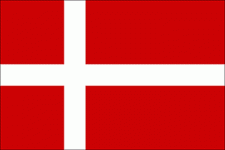
Every year, Statistics Denmark launches a report with the latest numbers and analysis concerning foreigners in Denmark, only available in Danish.
The institute is run by the state and as such is politically 'neutral', but the categories used to analyse the different ethnic groups have been criticised by the UN Committee on the Elimination of Racial Discrimination (CERD). For many years, the categories of Western and non-Western have been used, as well as "children of descendants", referring to third generation migrants. Being granted Danish citizenship does not move a person to the "Danish" category, even though the country has some of the world's toughest requirements for obtaining citizenship.
This year, another controversial category has been added to the statistics: people from MENAP+T countries (Middle East, North Africa and Turkey), a definition introduced by the minister of integration, Mattias Tesfaye. Critics are arguing that in practice, this new category separates people with a Muslim background from other foreigners in Denmark.
The Danish government says it is using these categories to ensure a more precise image of which foreigners "present a problem for integration" in the country. Critics say that the categories lead to the stigmatisation of certain groups, and mean that migrants are never fully included in Danish society, even after generations.
Key statistics for 2021:
- 14% of the population in Denmark comprises migrants, refugees or descendants of migrants. The municipality with the largest percentage of people with foreign background is Ishøj (42%).
- 22% of babies born in Denmark in 2020 were born to mothers with a foreign background. In 1990, this figure stood at 8%.
- Employment has increased more among non-Western migrants than among others, including Danes. However, it is still below the level of Danes and Western migrants – especially among women.
- Education levels vary across nationalities. 40% of migrants from Poland and Bosnia-Herzegovina had a vocational education, which was only true for 14-18% of residents from Pakistan, Iran, Rumania and Iraq, and only for 7% of Syrians. Among migrants from Romania, Lithuania, Poland, Pakistan and Iran, 14-22% had significant higher education; more than among Danes (14%), but not as high as Germans (36%).
- Among 22 year-olds across Denmark, the percentage enrolled in education was the same for descendants of non-Western migrants as for Danes.
- Children of such descendants were found to have lower grades when graduating from primary school: 5.7 for boys and 7.0 for girls. Children with a Danish background achieved, on average, grades of 7.1 (boys) and 8.0 (girls).
- Poverty was found to be much more widespread among residents from the MENAP+T countries. This is connected to the fact that the majority from this group came to Denmark as refugees or via family reunification processes.
- Annual income before tax for male residents from Syria, Eritrea, Somalia and Bulgaria was on average EUR 33 600. For Danes, it was almost twice as much: EUR 60 600.
- Among 60-69 year-olds with a non-Western background, median net savings was EUR 31 600. For Danes of the same age, this figure was EUR 255 400.
- Child poverty is common among non-Western families in Denmark, where 36% of children aged 10-14 were found to be living in relative poverty (under 50% of the median income) compared with only 2% among Danish children of that age.
- Crime rates are generally decreasing, especially among young people with a foreign background, but are still lower among residents with Danish background. When the education level of the family is taken into account, the difference was 31% higher for migrant men and 108% higher for male descendants in 2020.
Details
- Publication dates
- Geographic area
- Denmark
- Source
- Posted by
